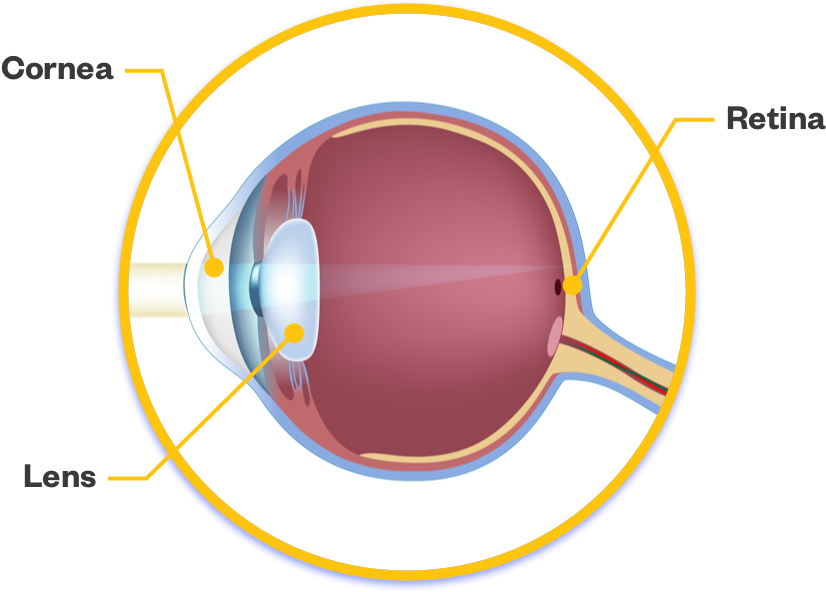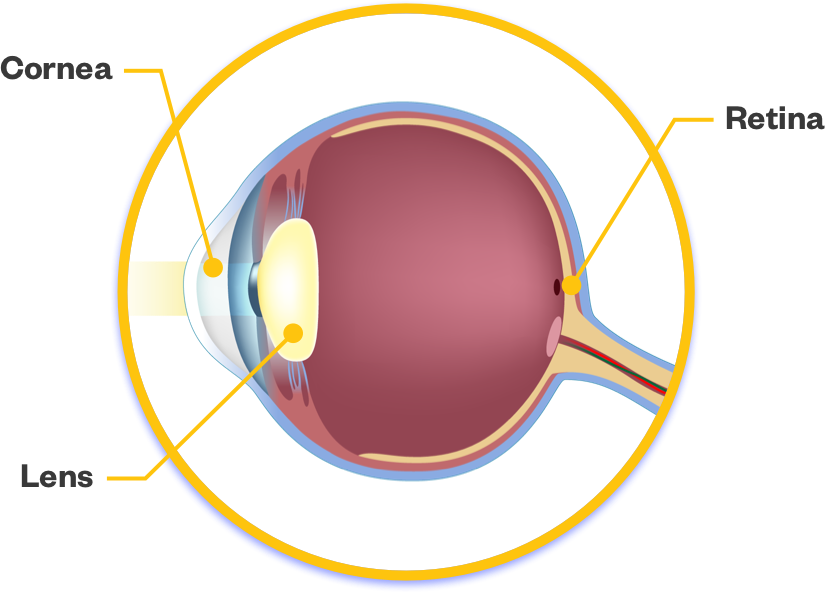What Are Cataracts?

A cataract is a clouding of the natural lens of your eye that causes your vision to appear blurry. Cataracts happen gradually as your eyes get older, and the natural lens will eventually need to be removed and replaced with an artificial Intraocular Lens (called an IOL) in order for you to see clearly.
Cataracts Are Extremely Common
At first, only a small part of your vision is cloudy, but as the cataract grows over time, your vision may become duller and more blurry.
Eye Without Cataract

Light enters the eye through the cornea, passes though the lens and is focuses onto the retina, providing a crisp, clear image.
Eye With Cataract

As the eye ages, the lens becomes cloudier, allowing light to pass through. The light that does make it to the retina is diffused or scattered, leaving vision blurry.
Cataracts Can Affect Everyday Tasks

Communication
Cataracts impact your near vision. You may find yourself increasing the font size to read and write messages on your phone or tablet.

Chores
Cataracts impact your intermediate vision. You may have difficulty spotting dirt while cleaning or become less precise with tools like screwdrivers, drills, and saws.

Driving
Cataracts impact your distance vision. You may have trouble noticing details on the road.

Recreation
You may notice objects appearing blurry, distracting from sightseeing, golf and other activities you enjoy.
Surgery is the only way to remove cataracts and get back to clear vision.
Cataract surgery is very safe and common. More than 4 million surgeries are performed every year in North America. The procedure is safe and has an excellent success rate.
Did you know that surgery can correct other vision conditions like presbyopia and astigmatism at the same time as treating your cataracts?
Talk to your eye care professional about your vision goals and learn more about lens options before your surgery.